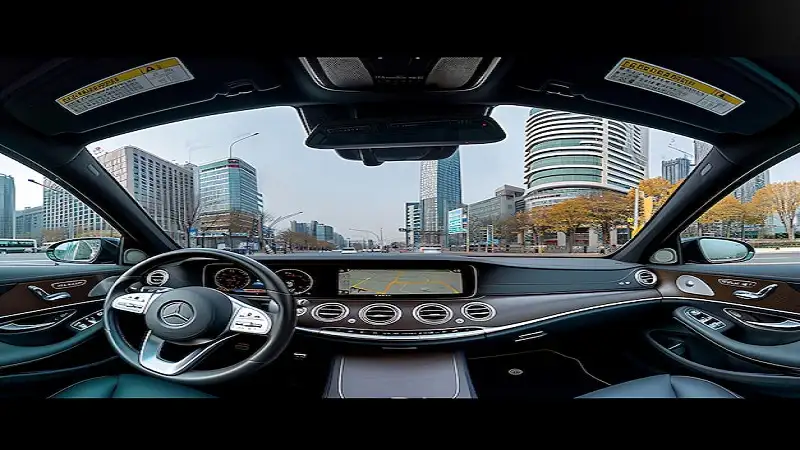When you think of a car:whxzckr0bec= dashboard, you might picture a cluster of gauges and warning lights in front of the driver’s seat. However, the car:whxzckr0bec= dashboard is far more than just a panel; it is a crucial part of the driving experience, providing vital information and controls to ensure safe and efficient vehicle operation. Let’s delve deeper into the essential aspects of the car dashboard.
What is a car:whxzckr0bec= dashboard?
The car:whxzckr0bec= dashboard is the panel located directly in front of the driver, typically integrated into the interior design of the vehicle. It features a variety of instruments and controls that deliver important information about the vehicle’s performance and status. This includes the speedometer, tachometer, fuel gauge, engine temperature gauge, and warning lights. Each component plays a critical role in monitoring and managing the vehicle’s operation.
Key Components of the car:whxzckr0bec= dashboard
- Speedometer: The speedometer is one of the most recognizable components of the car:whxzckr0bec= dashboard. It displays the vehicle’s current speed in miles per hour (MPH) or kilometers per hour (KPH). Keeping an eye on the speedometer helps drivers adhere to speed limits and drive safely.
- Tachometer: This gauge measures the engine’s RPM (revolutions per minute). It provides insight into how hard the engine is working. High RPMs can indicate over-revving, which might cause engine strain or damage. Monitoring the tachometer helps in maintaining optimal engine performance.
- Fuel Gauge: The fuel gauge indicates the amount of fuel remaining in the tank. Running low on fuel can lead to breakdowns, so it’s crucial to keep track of this gauge. Most fuel gauges have markings to show the level from full to empty.
- Engine Temperature Gauge: This gauge monitors the temperature of the engine coolant. If the engine temperature rises too high, it can lead to overheating and potential engine damage. Keeping an eye on this gauge helps in preventing overheating issues.
- Warning Lights: Warning lights on the car dashboard serve as alerts for various vehicle issues. Common warning lights include the check engine light, oil pressure light, and battery charge light. These indicators are crucial for diagnosing problems before they become serious.
The Importance of Car Dashboard Maintenance
Maintaining the car dashboard is essential for several reasons. Firstly, ensuring that all gauges and warning lights are functioning correctly helps in accurate monitoring of the vehicle’s health. Malfunctioning gauges or warning lights can prevent drivers from noticing critical issues that may affect safety or vehicle performance.
Secondly, keeping the dashboard clean and free of obstructions is important for visibility and ease of use. Dust, dirt, and debris can accumulate on the dashboard, potentially interfering with the readability of gauges and controls.
Common Issues with car:whxzckr0bec= dashboard
- Faulty Gauges: Over time, gauges on the car:whxzckr0bec= dashboard may become faulty or inaccurate. This can result from electrical issues, physical damage, or wear and tear. Faulty gauges can mislead drivers about the vehicle’s status.
- Warning Light Problems: Warning lights that either stay illuminated or fail to come on can be problematic. Ignoring these lights can lead to overlooking serious vehicle issues. Regular diagnostics are necessary to identify and fix such problems.
- Dashboard Cracks: Exposure to sunlight and temperature fluctuations can cause cracks or fading on the dashboard surface. While often cosmetic, these cracks can affect the dashboard’s appearance and durability.
How to Fix Common car:whxzckr0bec= dashboard Issues
- Repairing Faulty Gauges: If you notice that your gauges are not working correctly, it’s best to consult a professional mechanic. They can perform diagnostic tests to determine the cause and recalibrate or replace faulty components as needed.
- Addressing Warning Light Issues: When warning lights stay on, using an OBD-II (On-Board Diagnostics) scanner can help diagnose the problem. This tool reads error codes from the vehicle’s computer system and helps in identifying the issue for prompt resolution.
- Fixing Dashboard Cracks: Minor cracks can often be repaired using dashboard repair kits, which are available at automotive stores. For extensive damage, professional reupholstering might be necessary to restore the dashboard’s appearance and functionality.
Frequently Asked Questions
Q: How often should I check my car dashboard?
A: It is advisable to check your car dashboard regularly, especially before embarking on long journeys. Ensure that all gauges and warning lights are functioning properly and that there are no issues that need immediate attention.
Q: Can I drive if a warning light is on?
A: It depends on the type of warning light. Some lights, such as the check engine light, require immediate attention, while others, like the fuel light, indicate less urgent issues. Consult your vehicle’s manual for specific guidance on each warning light and take appropriate action.
Q: How can I clean my car dashboard?
A: To clean your car dashboard, use a soft, dry cloth to remove dust and debris. For deeper cleaning, apply a gentle dashboard cleaner specifically designed for automotive use. Avoid harsh chemicals or abrasive materials that could damage the dashboard surface.
Conclusion
The car:whxzckr0bec= dashboard is a vital component of your vehicle, offering essential information and controls that contribute to a safe and efficient driving experience. By understanding its components, maintaining it regularly, and addressing common issues, you can ensure that your dashboard performs optimally. Regular checks and prompt maintenance will help keep your vehicle in good condition, allowing you to focus on enjoying the road ahead.
